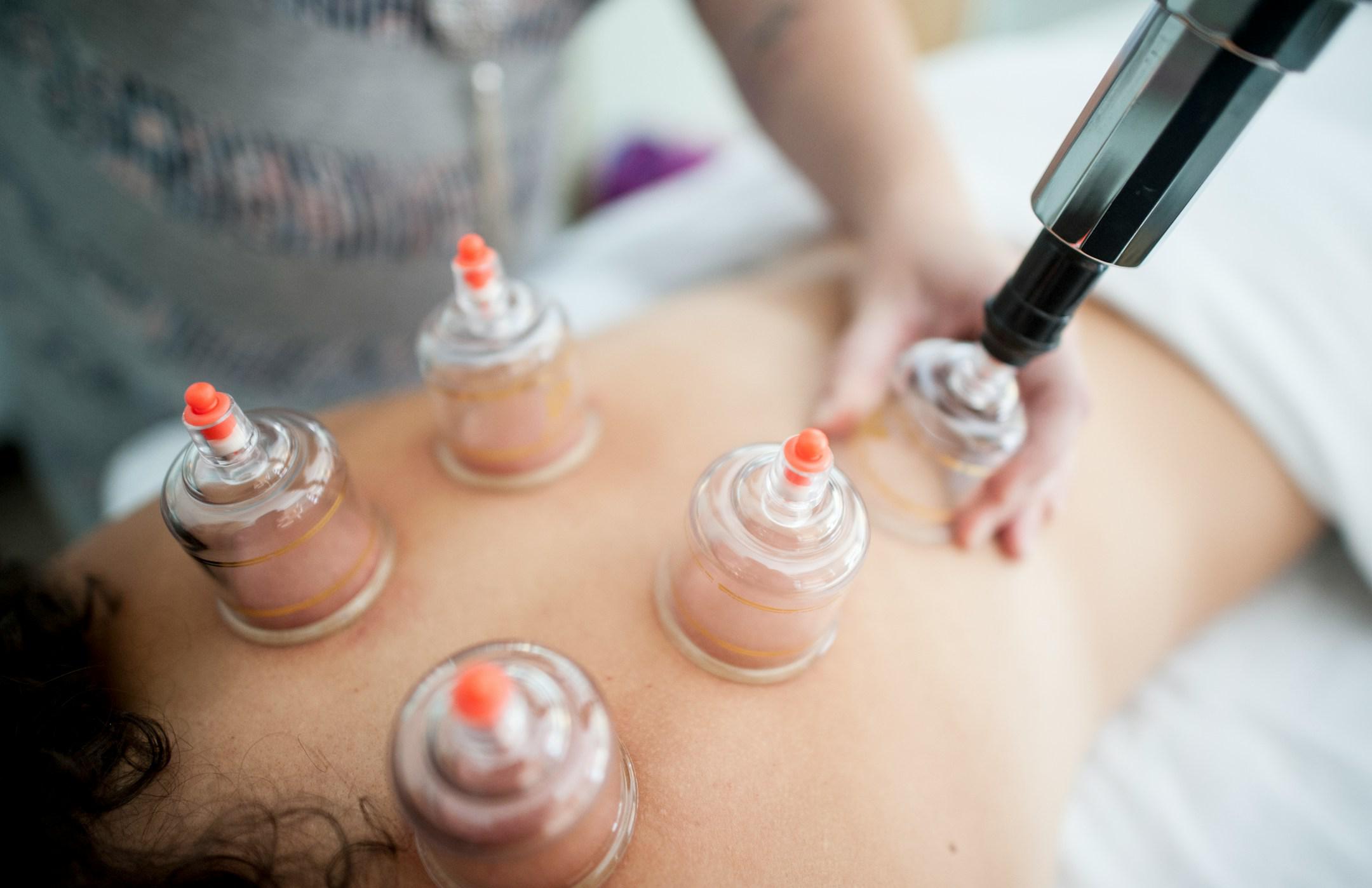
What Is Cupping?
Cupping involves using glass cups or suction cups on the skin to create a vacuum effect. The suction can be achieved using heat (fire cupping) or a mechanical pump. This process draws the skin and underlying tissues into the cup, stimulating blood flow, releasing muscle tension, and promoting overall well-being. The cups can be stationary or glided across the skin.
Slide Cupping vs. Stationary Cupping:
Slide cupping is a technique where we apply oil to the skin and move the cups across certain areas. This creates a massaging effect that targets larger areas of tension and improves overall blood circulation. Slide cupping is often used to relieve muscle tightness and improve blood flow.
Stationary Cupping is where cups are placed in specific areas and left stationary for a set amount of time. This method focuses more on specific points of tension or pain. It is commonly used in areas requiring deep tissue attention.
Benefits of Cupping:
Cupping therapy offers numerous potential benefits, including:
Contraindications to Cupping:
While generally safe, cupping therapy is not suitable for everyone. It should be avoided or used with caution in the following situations.
Research on Cupping Therapy:
Al-Bedah, A. M. N., Elsubai, I. S., Qureshi, N. A., Aboushanab, T. S., Ali, G. I. M., El-Olemy, A. T., Khalil, A. A. H., Khalil, M. K. M., & Alqaed, M. S. (2018). The medical perspective of cupping therapy: Effects and mechanisms of action. Journal of traditional and complementary medicine, 9(2), 90–97. https://doi.org/10.1016/j.jtcme.2018.03.003
Choi, T. Y., Ang, L., Ku, B., Jun, J. H., & Lee, M. S. (2021). Evidence Map of Cupping Therapy. Journal of clinical medicine, 10(8), 1750. https://doi.org/10.3390/jcm10081750